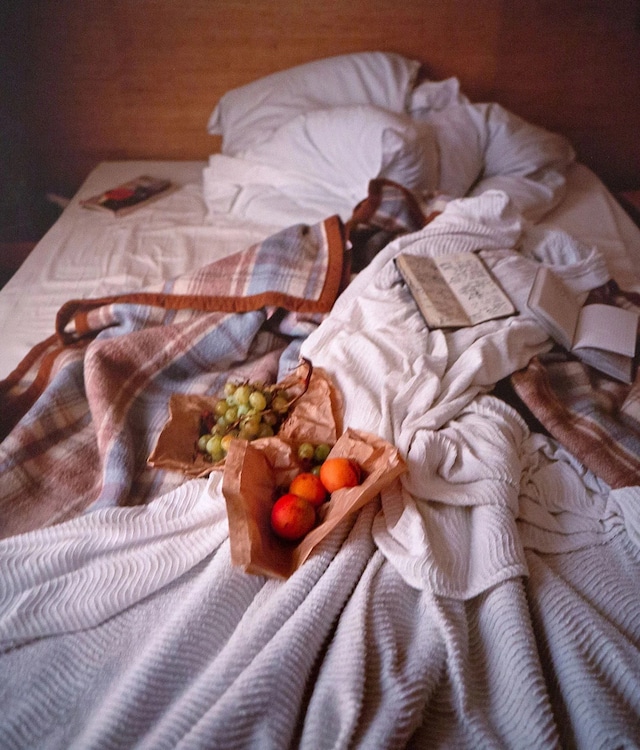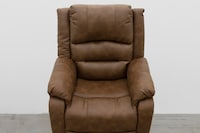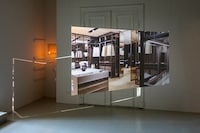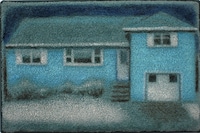A new group exhibition at Anonymous Gallery in New York explores the underlying conflicts of the home as a place of both tranquility and turmoil
The home is often viewed as a place of comfort, but it can also be a source of tension and confinement. A new group show at Anonymous Gallery in New York explores the underlying conflicts of the home as a place of both tranquility and turmoil, through the work of iconic artists such as Félix González-Torres, Nan Goldin, and Mike Kelley. Curator and gallery founder Joseph Henrikson is also interested in the contrast between a safe interior and turbulent outside world.
The show’s title, The Chair by the Window Is an Old Friend conjures alternative images, “whether it’s a warm sunny day and you’re looking out the window having a coffee, or you’re peering outside because you’ve heard some kind of crash and are wondering what’s going on,” Henrikson tells me, when we speak ahead of the opening. He reflects upon the terrifying upheavals in US politics at the moment, which many will digest on screen from the comfort of home. We are “fielding this barrage of information from a safe space”, he says, considering the lack of action many will take, and subsequent guilt or detachment that might follow.
“A lot of people that would be in a position to resist are still on their heels and figuring out what to do,” he says. “I was thinking of the home as this place we find safety, but it’s still isolating, and we’re still looking out the window, wondering what to do. I then thought more broadly about the objects we live and interact with. We identify with them, and they identify us.”
The works reflect upon different items in the home, and their inclusion together creates moments of discomfort. Carolyn Lazard’s ‘lazy boy’ recliner Workers’ Comp (2021) seems to invite viewers to sit upon it, as does Dozie Kanu’s unconventional concrete design Chair [ iii ] (Dark)’ (2022) – of course, neither are actually open for the public to physically engage with and their promise of comfort is withheld. There are also floor-based pieces that visitors must traverse around, such as Klara Liden’s Bench (2012), which comprises a stack of drywall.
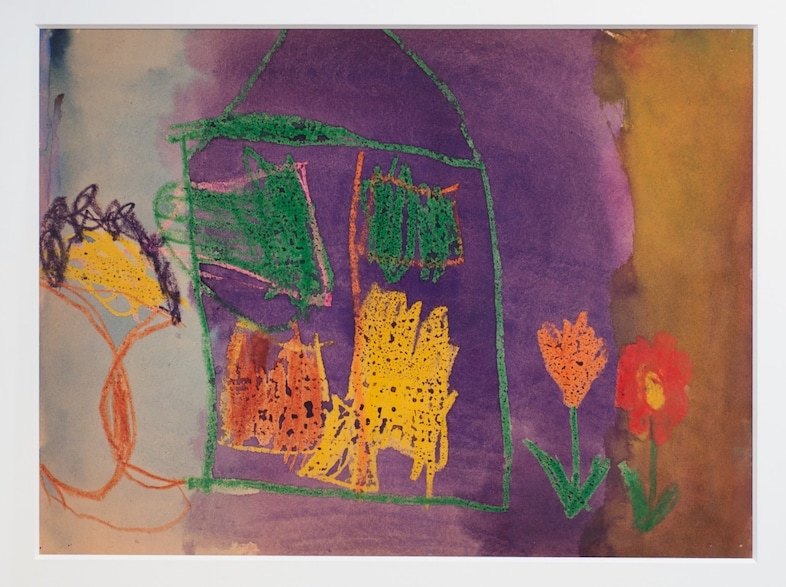
“While I want that familiarity of home, I hope there is some awkwardness as well,” says Henrikson. “There are plenty of works around the floor of the space, which will be an interesting navigation for the audience. Joseph Strauss’s work, for example, feels fragile and maybe already falling apart.” Some pieces are hung low to the ground, such as Elliot Reed’s umbrella photographs, which mimic a domestic position rather than a formal gallery eyeliner.
The curator was drawn to artists who conjure an emotional response in the viewer, and Gonzalez-Torres was the first on his list. The artist’s mix of sensitive ideas and everyday objects was intriguing for Henrikson. “He was so profoundly able to achieve an emotional sentiment using found objects that still felt like they were his. He used these objects you would associate with everyday life in really thoughtful ways to tell a story.” Henrikson was similarly interested in Nan Goldin’s use of interior space in her photographs, in which heightened scenes rich with personal connections play out sometimes in domestic space. Both artists convey a warm familiarity while also presenting pieces full of friction.
Mike Kelley’s We Communicate Only Through Our Shared Dismissal of the PreLinguistic #12 (1995) uses the aesthetics of children’s drawings, depicting a simple house structure with giant flowers alongside it. It’s the kind of drawing that might be found on a family fridge, though for Kelley, an artist famous for delving into the dark side of childhood, it has multiple readings. “We’ve all had that experience of depicting a home as children,” says Henrikson. “But even that simple shape of the windows and door can mean something very different to different people.”
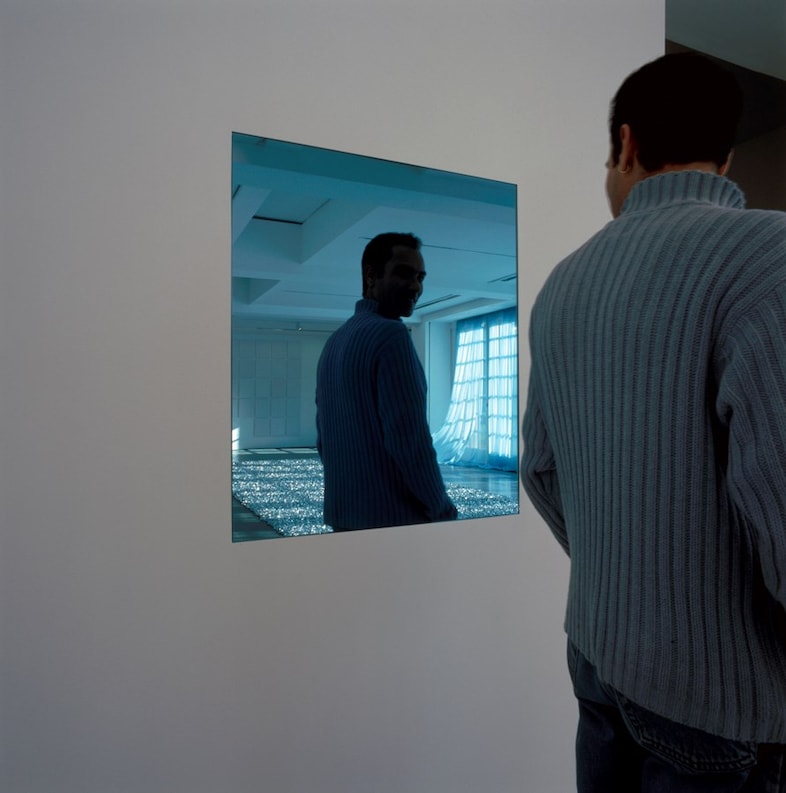
The ideas explored in the exhibition have been heightened since the pandemic, when attention was drawn more than ever to the lack of comfort that many feel in their homes. While lockdown didn’t directly influence the show, Henrikson tells me, “I can’t help but think about it. The pandemic is pretty on theme for everything we experience now. The current political and social atmosphere has a lot to do with what everyone experienced at that time.” He reflects upon this period when many were trapped indoors, sometimes falling deeply into social media conspiracies and extremism, which are driving forces in the current US political landscape.
Amongst all the works, Henrikson cites Gonzalez-Torres’ blue mirrored Untitled (Fear) (1991) as crucial to the show. When viewers move around the gallery, they can see many of the other pieces abstracted within it, just as mirrors in the home create an alternative view of the space and us. “It’s what we use every day to identify ourselves,” he says. “The mirror is probably the most pivotal item in the home that does that – and sometimes it doesn’t feel good.”
The Chair by the Window Is an Old Friend is on show at Anonymous Gallery in New York until 14 June 2025.
